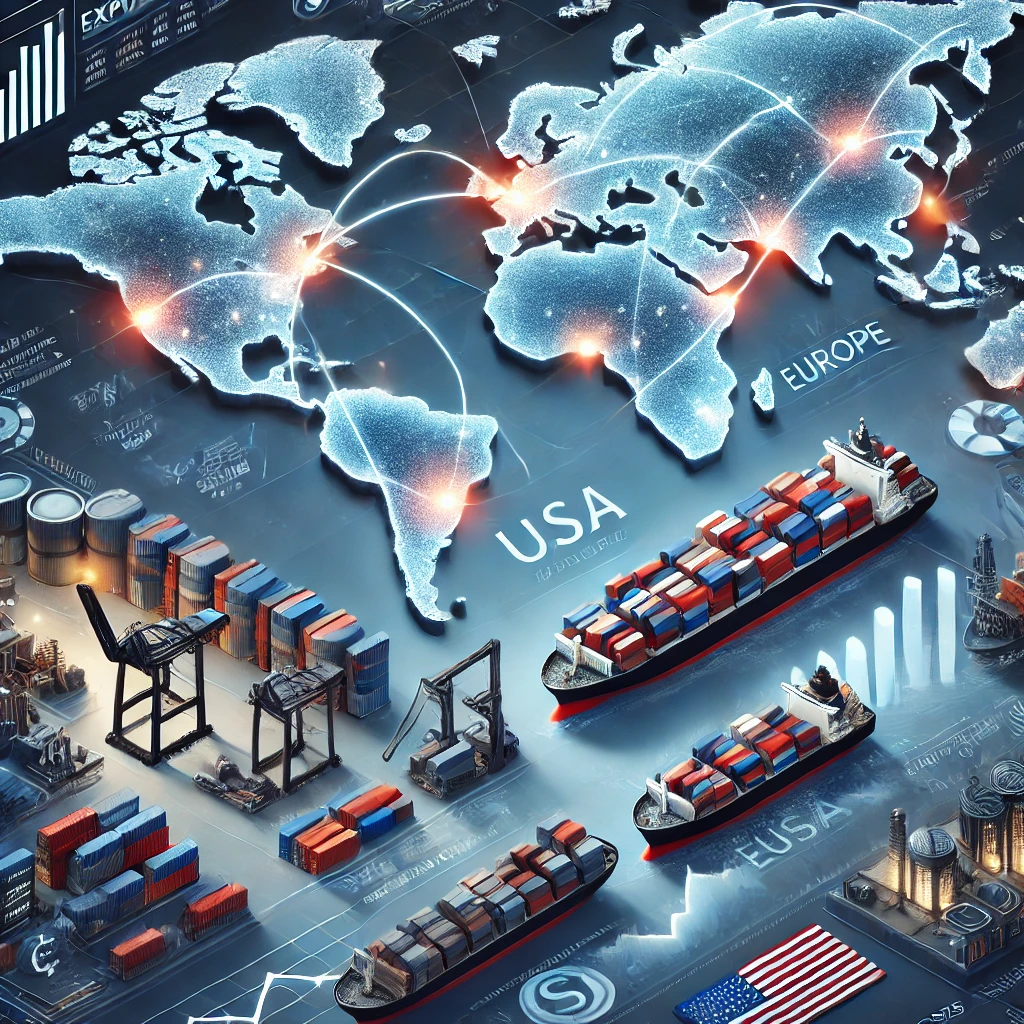
In February 2025, the administration of U.S. President Donald Trump announced the introduction of “reciprocal” tariffs on imports, affecting both allies and trade adversaries of the United States. This move has raised significant concerns within the European Union (EU) and among economic experts, sparking intense debate over the potential consequences of such protectionist policies.

Trump’s “Reciprocal” Tariffs: An Analysis
The concept of “reciprocal” tariffs, as outlined by the Trump administration, involves imposing equivalent duties to those that other countries apply to U.S. products. In practice, if a country imposes a 10% tariff on an American product, the U.S. would respond with a 10% tariff on the same type of imported product from that country. This policy aims to “level the playing field” for American producers but raises questions about its effectiveness and global repercussions.
According to Lawrence Summers, former U.S. Treasury Secretary, this strategy could be “particularly damaging.” Summers argues that Trump’s approach could trigger a global trade war, harming not only foreign economies but also the U.S. itself. Tariffs would increase costs for American consumers and businesses, reducing competitiveness and potentially provoking retaliatory measures from trade partners.
The Impact of Tariffs on Steel and Aluminum: Protection or Economic Damage?
Tariffs on steel and aluminum imports represent a controversial political choice, with effects extending far beyond the steel industry. As economist Lawrence H. Summers points out, in the United States, far more people work in industries that use these raw materials than in those that produce them. Protecting a limited number of jobs in steel mills could therefore come at a much higher cost for other sectors, such as the automotive and construction industries, which rely on competitively priced steel and aluminum.
The effects of tariffs do not simply disappear once they are removed; market distortions and employment consequences can persist over time.
The goal of these tariffs appears to be more about negotiation pressure than actual economic benefit. Trump’s negotiation style, as highlighted by Stephanie Flanders, is characterized by bold statements and extreme positions to gain diplomatic or economic leverage. However, this strategy can generate uncertainty, negatively affecting industries that depend on these raw materials.
Despite the market tensions caused by these policies, Trump has in the past shown a willingness to adjust his stance when the negative economic impact becomes evident. This was the case with China, where tariffs were applied in a more targeted manner to minimize the direct impact on American consumers. Whether this strategy will ultimately yield real benefits or cause more harm than protection to the U.S. economy remains to be seen.
Impact on European Countries and the Czech Republic
The European Union, one of the United States’ key trading partners, would be significantly affected by these measures. Countries like Germany, with a strong export-oriented manufacturing sector, could experience a decline in exports to the U.S. This, in turn, would have a domino effect on other interconnected European economies, including the Czech Republic, which is closely integrated into German supply chains.
In particular, the Czech automotive industry, which supplies key components to German manufacturers, could suffer setbacks if German car exports to the U.S. decrease due to the new tariffs. This scenario highlights how protectionist trade policies can have ripple effects, impacting economies that may not initially seem directly involved.
Furthermore, rising inflation in the United States could have unexpectedly positive consequences for financial markets, pushing Donald Trump to moderate his trade policies. According to Bank of America strategists, the need to contain further price pressures might compel him to reduce tariffs and adopt a more cautious approach to immigration policies.
The European Commission’s Response
In response to the U.S. announcement of “reciprocal” tariffs, the European Commission issued an official statement on February 14, 2025, expressing its position. The Commission described the proposed policy as “a step in the wrong direction” reaffirming the EU’s commitment to an open and predictable global trade system that benefits all parties involved.
The statement emphasized that the EU maintains some of the lowest tariffs worldwide and sees no justification for increased U.S. duties on European exports. Additionally, the Commission highlighted that tariffs are essentially taxes that raise costs for consumers and businesses, stifling growth and fueling inflation. The EU warned that it would respond “firmly and immediately” against unjustified trade barriers, ensuring that European companies, workers, and consumers are protected from unwarranted tariff measures.
Final Considerations
The introduction of “reciprocal” tariffs by the Trump administration presents a significant challenge to transatlantic trade relations. While the stated goal is to protect U.S. producers, broader implications suggest potential harm to both the global and American economies. The European Union’s response indicates a strong commitment to defending its interests while maintaining a dedication to free and fair trade.
In this context, it will be crucial to monitor future developments and assess strategies that could mitigate the negative impacts of a potential escalation in trade tensions
AI-generated image.





